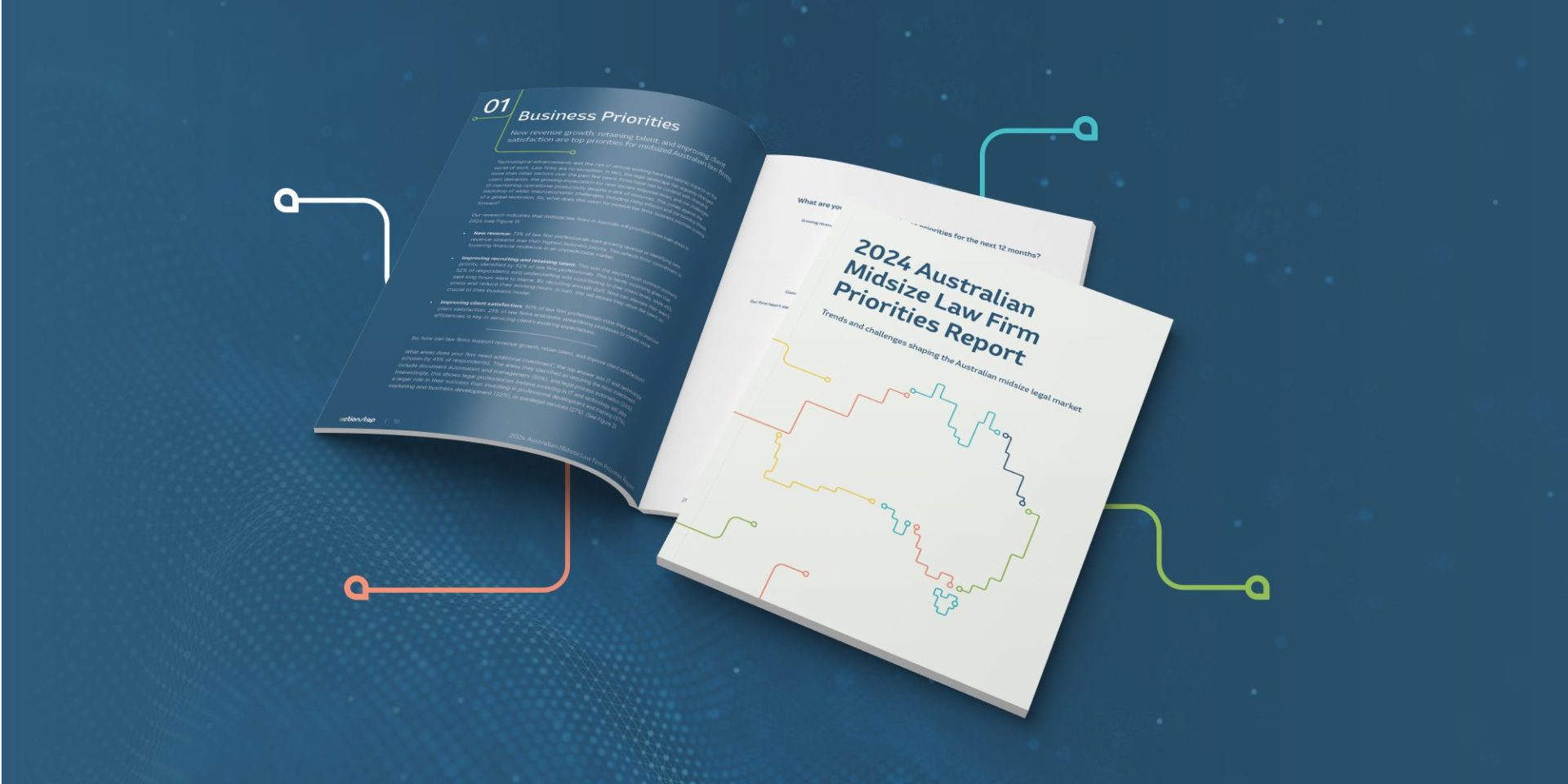Explore our key findings revealing a gap between priorities and investments—urging firms to strategise growth through targeted action in recruitment, client satisfaction, and technology.
Originally published on the Actionstep blog.
In the ever-evolving landscape of legal services, Australian midsize law firms need to think about their goals and challenges when setting strategies that will shape their growth. The 2024 Australian Midsize Law Firm Priorities Report offers a compelling roundup of crucial industry insights and priorities that are steering firms into a future marked by innovation and adaptability.
Our report surveyed more than 200 law firm professionals working for midsize firms across Australia to answer pressing questions that will help others understand the Australian market and opportunities for success. There were four clear top business priorities across all surveyed professionals, however we were surprised to learn that law firms might not be investing fully in their priorities. This opens a huge opportunity for success in the new year, if law firms consider their top business priorities and how to invest in them.
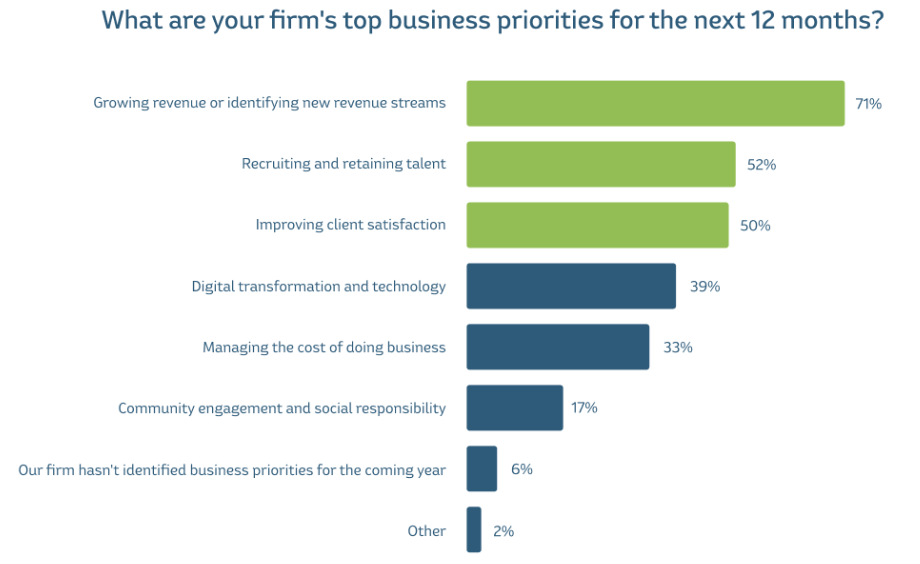
Identifying new revenue streams
For the majority of respondents, identifying new revenue streams emerged as the top business priority. This reflects firms’ commitment to fostering financial resilience in an unpredictable market. However, an intriguing disparity surfaced. While 71% acknowledged this imperative, only 32% considered marketing and business development as an area that their firm needs additional investment in. This disconnection between identifying new streams and actively investing in ways to secure them presents challenges for firms looking to expand their revenue sources.
Talent recruitment and retention
Talent recruitment and retention stands as a critical priority for 52% of Australian midsize law firms. Nevertheless, an alarming trend underscores this priority–41% of legal professionals are experiencing high or extremely high levels of stress, primarily due to understaffing, lack of resources, and long hours. Those grappling with elevated work-related stress are 4.1 times more likely to leave their firms. Connectivity is another area midsize law firms should investigate. Law firm professionals are 5.1 times more likely to leave their firm if they’re feeling disconnected with senior leaders and 4.9 times more likely to leave if they’re feeling disconnected with their team. This reality highlights the need for midsize law firms to foster connections through regular check-ins and meetings, social activities, and transparency while also recruiting enough staff so teams can alleviate stress and reduce long working hours, and in turn, the firms will retain top talent.
Improving client satisfaction
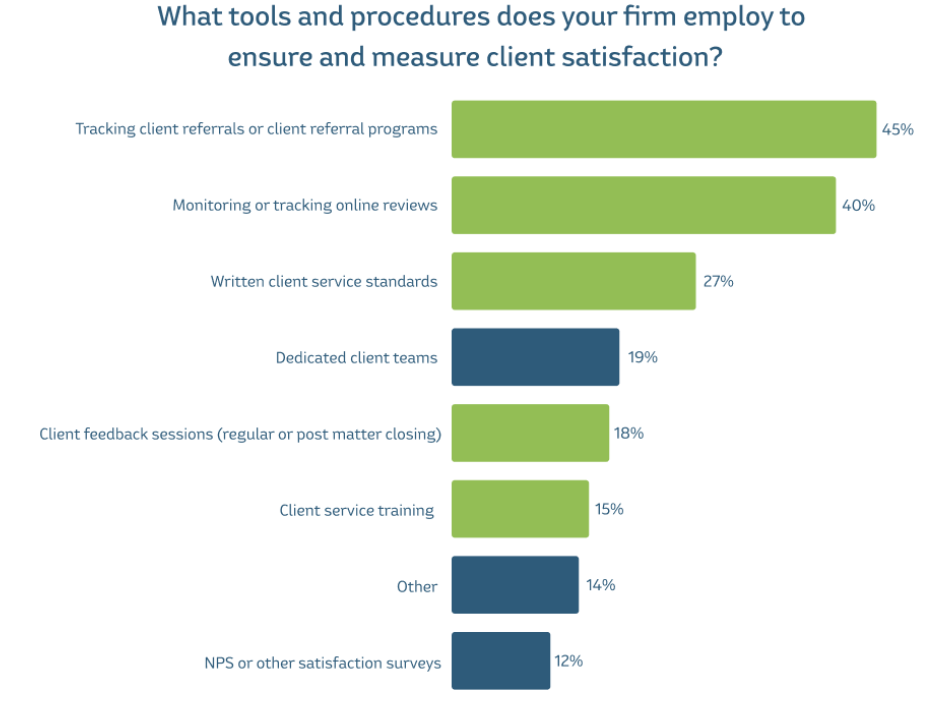
Enhancing client satisfaction emerged as the third top business priority with half of respondents marking it as one of their law firm’s businesses priorities. Law firms say they care about the client’s experience and feel the most stress from demand or pressure from clients yet aren’t necessarily taking the steps to enhance it. Astonishingly, a mere 27% have documented client standards, 18% have client feedback sessions, and only 15% provide client service training to their teams. This discrepancy between acknowledging the importance of client satisfaction and actively investing in measures to ensure it is a testament to the untapped potential within these firms to build client relationships.
Digital transformation and technology
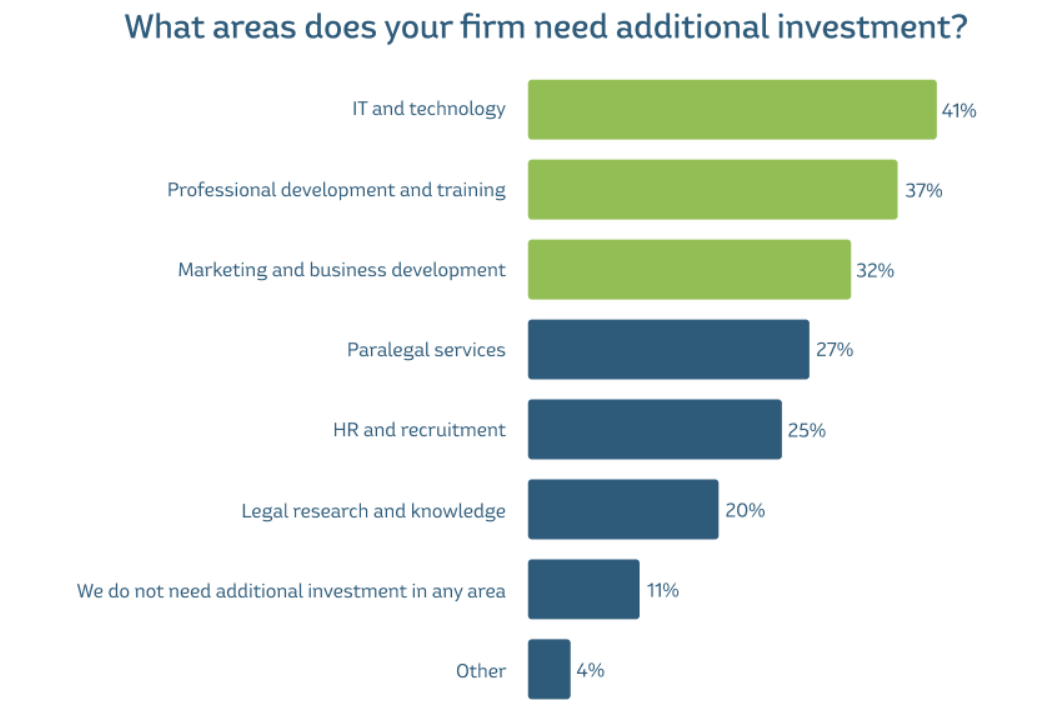
In the age of digitalisation, 39% of respondents identified digital transformation and technology as a key priority. Astonishingly, over half of the participants believe that technology is crucial for providing excellent client services with Automation and AI being key drivers. Yet, 41% say their firm needs additional investment in technology, with a focus on document automation and management and legal process automation, signalling a critical area for improvement.
Our takeaways
Be strategic with investments
For midsize law firms who struggle with the pressure to provide the same services as big law firms, but have the high pressure and demand from clients, investing in their priorities is not just beneficial but necessary. The information we gathered from our research demonstrates a disconnect between acknowledging a priority and actually investing in it, which can hinder their growth potential. When planning for 2024, consider the steps your firm and staff can take to achieve each priority.
Be aware of interlinked challenges
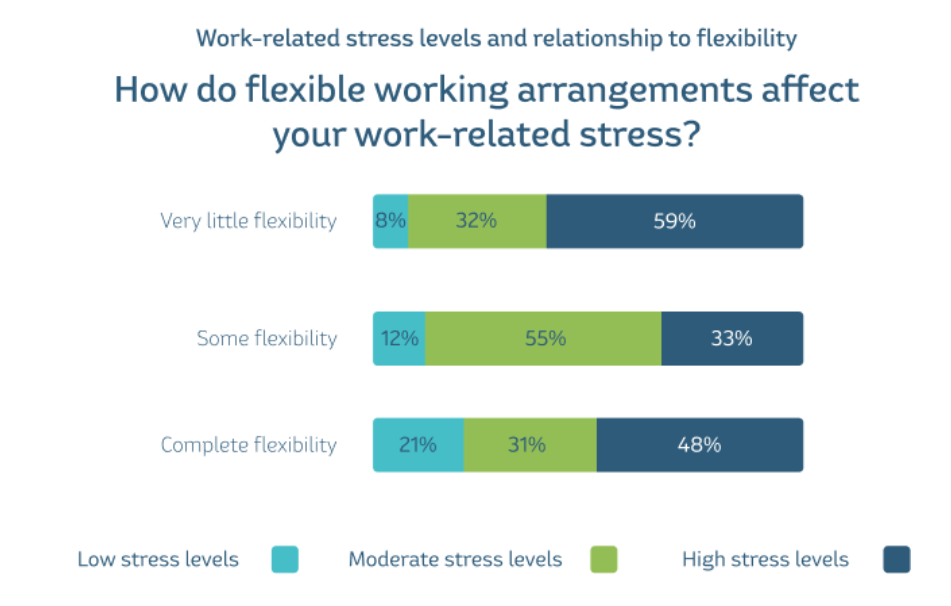
The combination of team stress, client services, and workplace flexibility are interlinked. When recruiting, understand that flexible working is now an expectation across all industries, including the legal sector. Midsize law firms should cater to this, especially considering our research shows flexible working arrangements can decrease employee stress levels. It also fosters connection with colleagues and senior leadership which has an even more outsized impact on reducing stress. Addressing stress levels among law firm professionals while improving client services requires an integrated approach that is built on accessible, collaborative, cloud-based tools to keep your team connected.
Think beyond AI
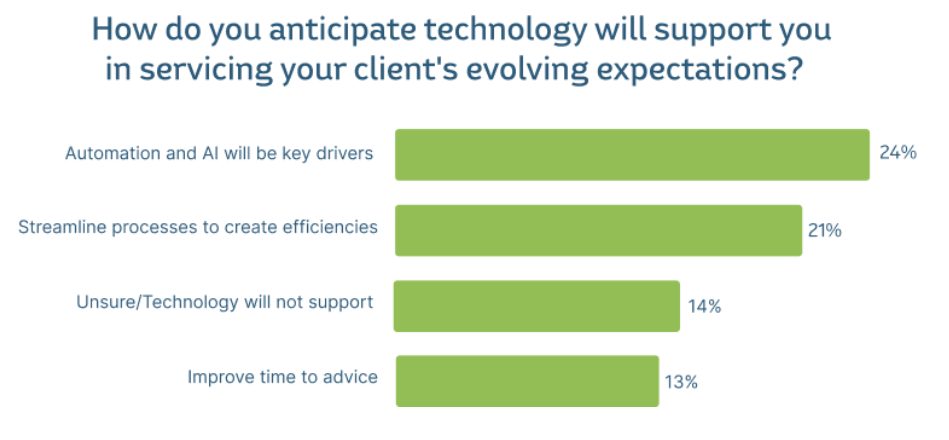
While digital transformation continues to be a top priority for law firms, it’s important to recognise that technology’s value goes beyond artificial intelligence. Document management, process automation, and other technological advancements can contribute just as much (if not more) to the operational efficiency of a law firm and its client-centric services. Law firms must carefully select the technology they work with because the right tools will transform how their staff operates.
Do more to improve the client experience
Client satisfaction requires systems and governance so that your firm can keep up with changing expectations and demands. It’s imperative that midsize law firms think about their workflows from the client’s perspective and have documented client standards and tailored client service training in place. Having these in place minimises the risk of misunderstandings and enhances transparency and accountability while providing clients with a timely, more consistent, and quality experience.
Charting the course in 2024
To keep up with the changing legal industry, Australian midsize law firms must navigate their business priorities with swiftness. The road to success requires actively investing in priorities, fostering a supportive work environment, leveraging technology for a holistic approach, and committing to securing client relationships.
The insights provided in our 2024 Australian Midsize Law Firm Priorities Report will equip you and your team on ways to improve your law firm’s strategies and approaches in the upcoming year. Or simply get insight into what law firms like yours are prioritising in 2024.
